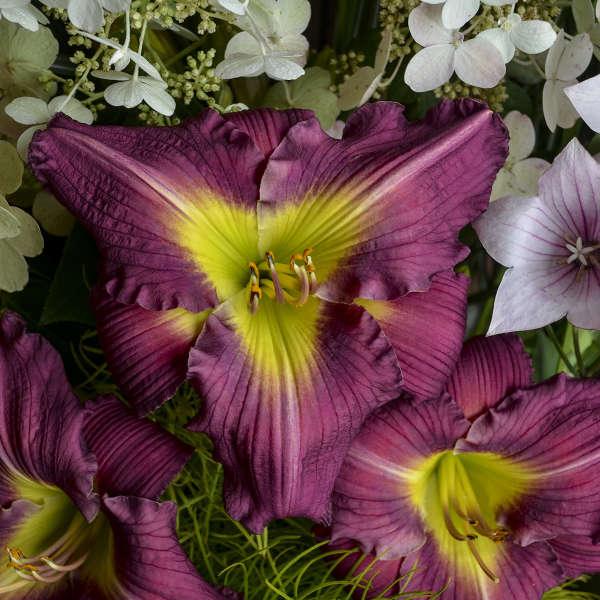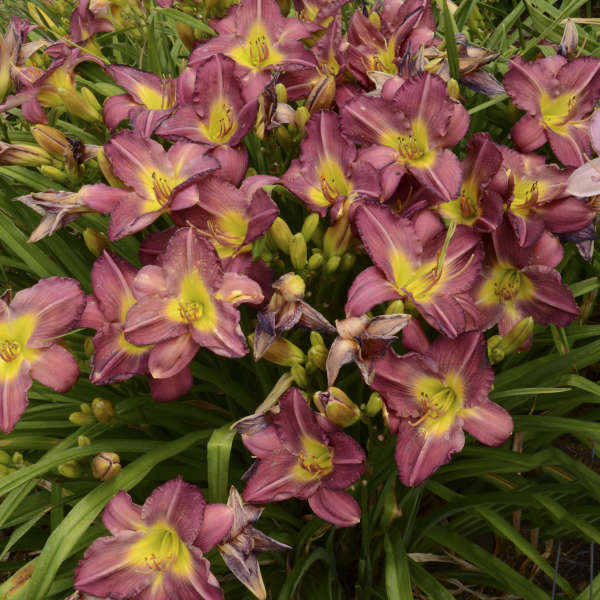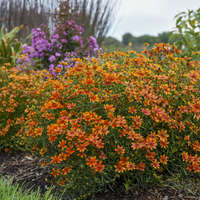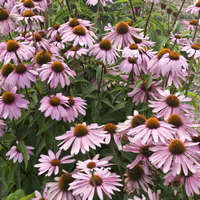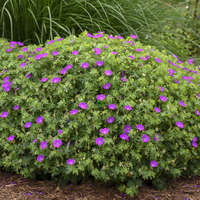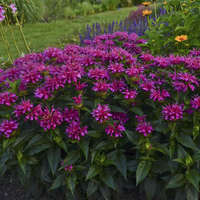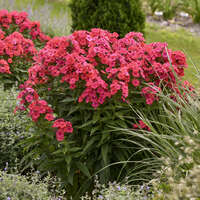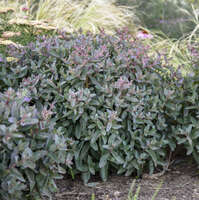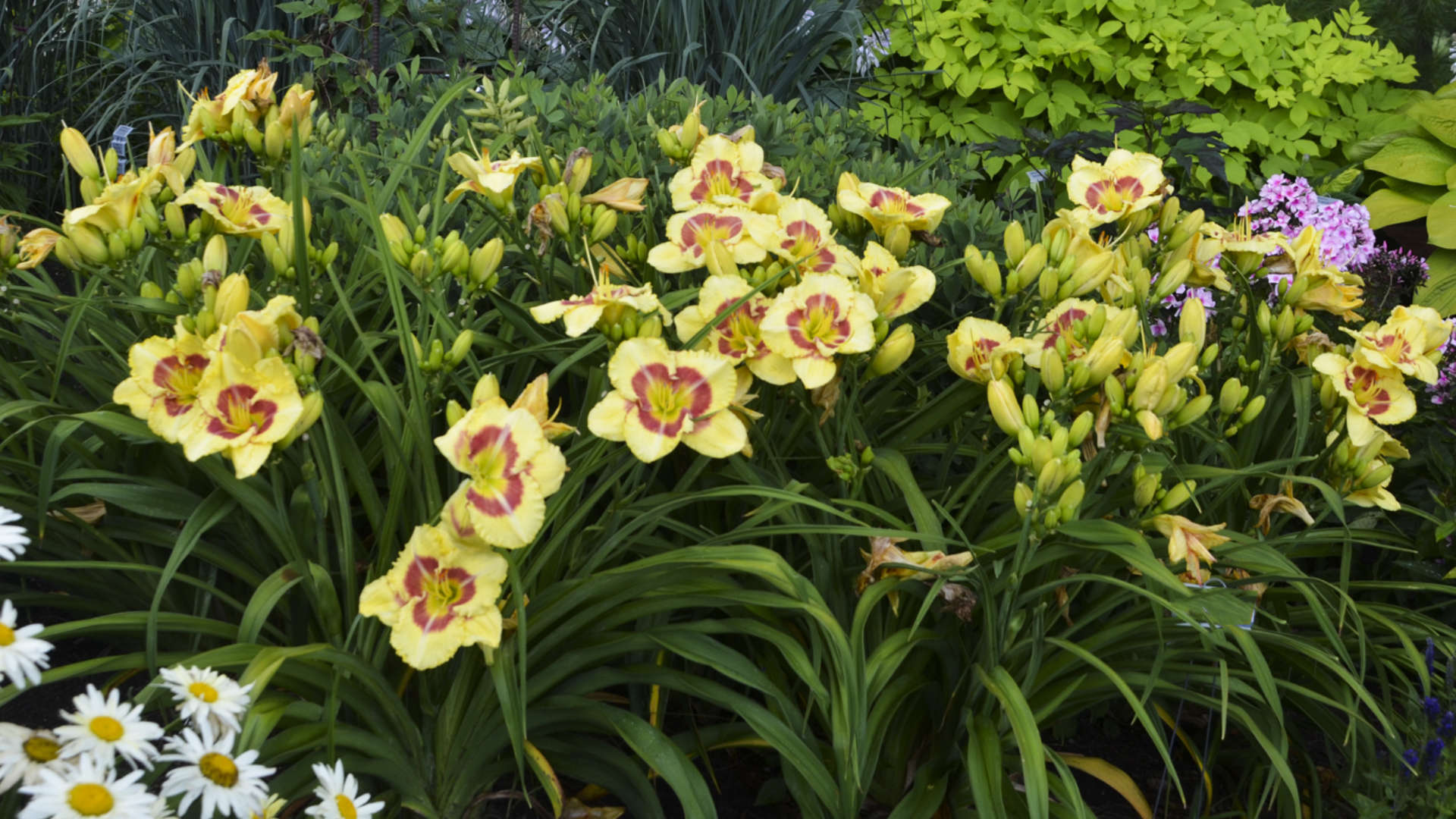Hemerocallis 'Garden Show'
Common Name: Daylily
One of the best daylilies in its color class! Putting on a terrific show in the garden, this daylily produces loads of large 6", shimmering diamond dusted, lavender mauve flowers with a prominent citron yellow throat and matching purple stamens. Ruffled, recurved tepals open wide and flat revealing the triangular flower form.
This daylily is highly fragrant; its delightful perfume is noticeable from several feet away. We like how compact and well-proportioned this daylily is, with its large flowers appearing just at the top of the foliage instead of on tall, willowy scapes like some large flowered daylilies. The well-branched and budded scapes appear first in midseason and then again later in the season when it reblooms.
Daylilies can survive many harsh conditions that other plants cannot including: polluted city environments, slopes, poor and dry soils, near pavement that is salted in winter, and under Black Walnut trees (not affected by juglone).
Characteristics (Compared to Other Daylilies)
- Midseason Bloomer, blooming in July.
- Rebloomer, producing a second set of flowers.
- Fragrant flowers.
- Dormant foliage.
- Diploid with 22 chromosomes. Most plants are Diploids.
Grade #1 Bare Root |
Grade #2 Bare Root |
